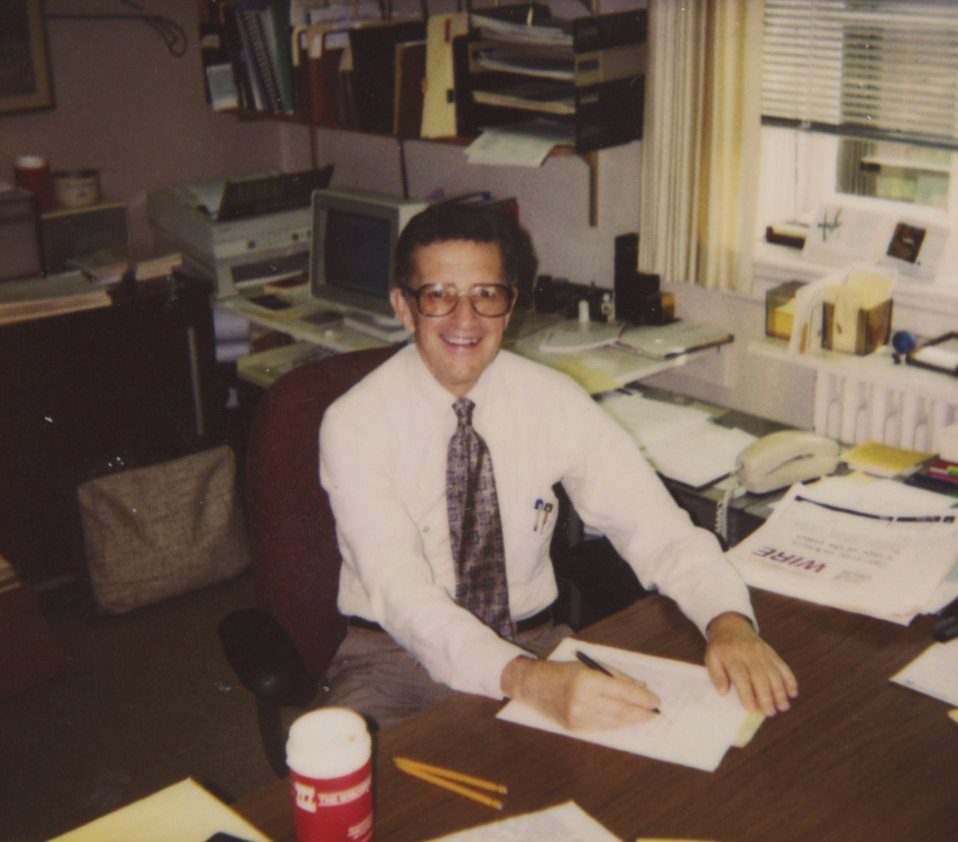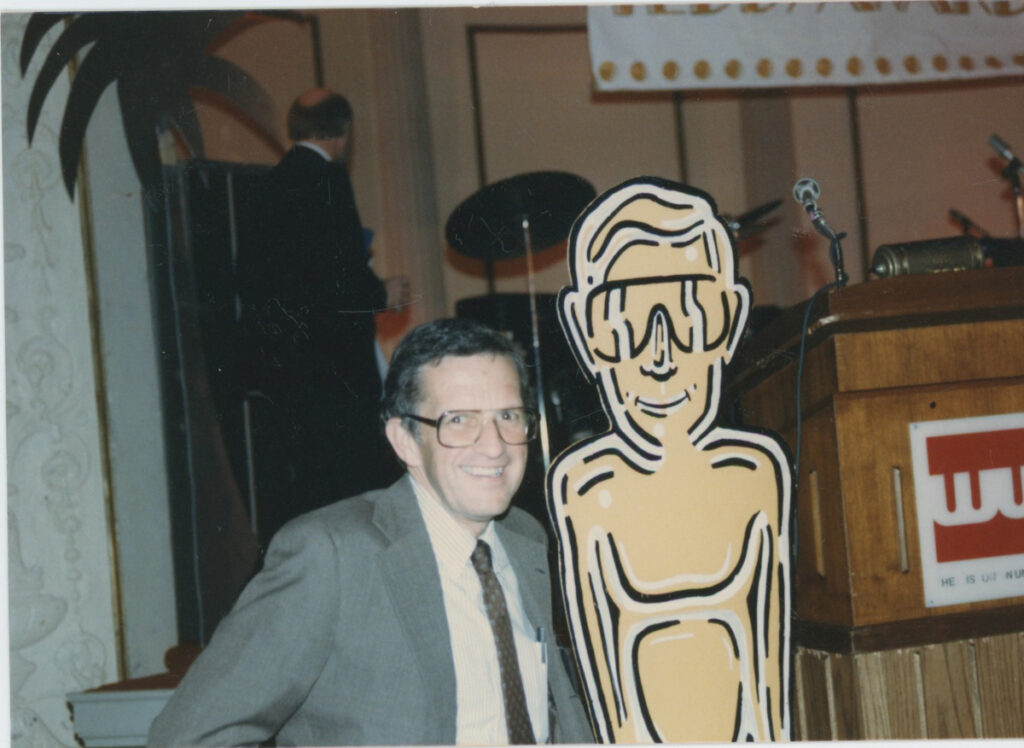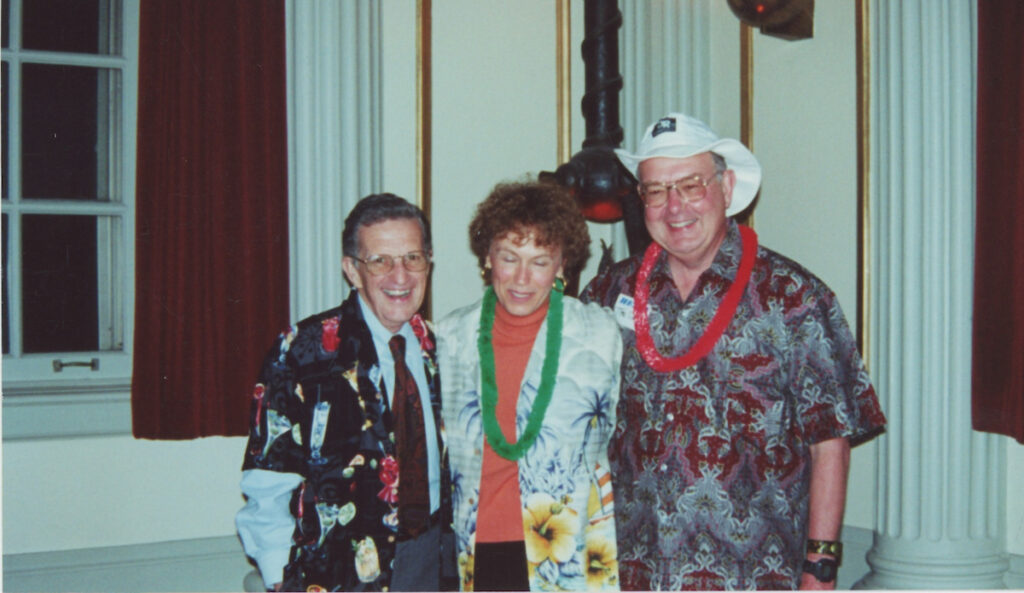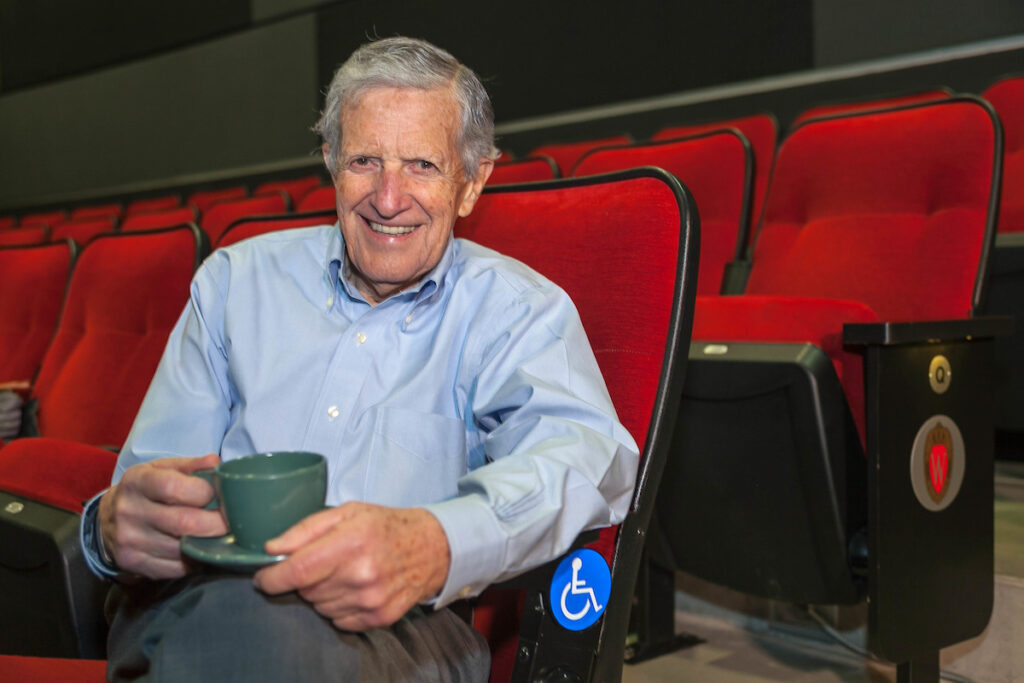Celebrating a Legendary Union Leader: Ted Crabb Turns 90!
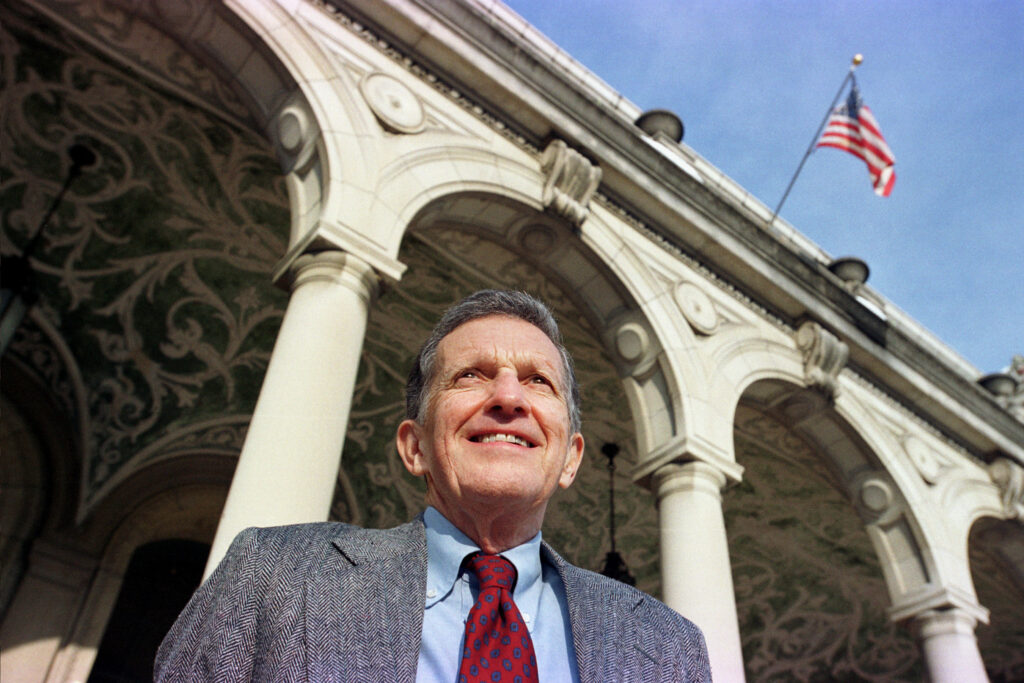
On a beautiful July day the summer before his freshman year at the University of Wisconsin–Madison, former Wisconsin Union Director Ted Crabb stepped foot on the Memorial Union Terrace for the first time and unknowingly changed the course of his life. Seventy-two years later, on another beautiful July day in 2022, Ted celebrated his 90th birthday, just four years after the building Memorial Union reached the same milestone. We took a stroll down memory lane with Ted and former Assistant Director for Social Education Karen Johnson Mathews to reflect on Ted’s everlasting dedication to our organization the Wisconsin Union, the team behind Memorial Union, Union South and countless experiences for a lifetime in Madison, Wis. You can read the highlights of our enlightening conversations with these talented individuals below.
Fond Memories
Ted still recalls his first taste of the Terrace with perfect clarity, despite the fact that it was more than seven decades ago.
“My first thought was, I’ve died and gone to heaven!” Ted said.
Little did he know at the time that Memorial Union would become a second home to him, first as a student and later during his 33-year run as Wisconsin Union director.
1953 was a big year for the Wisconsin Union and for Ted, as Memorial Union turned 25 years old and Ted, a then-senior at the University, became Union student president. In the decade following his graduation, he worked in a variety of positions at the Wisconsin Union, including Hoofer Outing Club director and assistant director of operations and building services, before he became a union director at the University of Wisconsin–Milwaukee. Four years later, he returned to his alma mater and became the second Wisconsin Union director in our organization’s history. Ted served as director until his retirement in 2001.
When asked about some of his fondest memories from his nearly 50 years with the Wisconsin Union, Ted smiled and recited one memory after another. Ted played an integral role in establishing some of the most iconic parts of the Union, such as the contract with Babcock Dairy Store to serve Babcock Ice Cream made right on campus in Union spaces; incorporating more windows into the former Lakefront Cafeteria (what is now Lakeview Lounge) to take advantage of Memorial Union’s lakeshore setting; and opening our building Union South in 1971.
Another exciting Union initiative was the red mug campaign that began in the late 1980s. Customers who purchased a red mug received a discount on future cups of coffee in Union buildings.
“Practically everyone who had a backpack at that time had a red mug dangling from it,” Ted said.
The 1987 renovation and expansion of the Terrace alongside the Memorial Union as we know it today was, as Ted describes it, an amazing event, welcoming additional patio seating, the brand-new restaurant the Brat Stand and 300 new sunburst Terrace chairs to the lakefront. Ted explained that these new additions promoted the sense that the Union was the place to be and brought thousands of people to Memorial Union, day and night.
Adjusting to Change
During our conversation, Ted acknowledged the impact that hindsight has had on his Wisconsin Union memories.
“Times have changed dramatically since I first started at the Union,” Ted said. “Many of my fond memories have become fortunate memories when I consider the kinds of change that evolved from them.”
Some of these changes include establishing Union markets and cafes in buildings all across the campus, rather than in just Memorial Union and Union South; expanding the outdoors outlet Outdoor UW onto the lakefront; communicating via cell phones and social media in addition to fliers and posters; and giving more responsibility and freedom to students through their Wisconsin Union employment and leadership roles. Additionally, the Union team adapted existing programs and added new programs in response to students’ needs and interests.
And, like the rest of the world, the Union’s operations were altered by COVID-19. For nearly two years, Union members and guests could not share social, cultural and educational opportunities in the same ways as before. Students and staff demonstrated their creativity and resilience by transitioning to virtual programming until we could join together in person once again.
“We have to recognize the fact that the Union, the University and the students are all constantly changing,” Ted said. “It’s our job to adjust and adapt to that change in the best way that we can.”
A prominent example of adjusting to change was the Vietnam protests in the late 1960s. Despite the large-scale change occurring during this period, the Memorial Union remained a safe space on campus.
“Organizers came to Memorial Union in the morning to plan the day’s events and returned each evening to debrief at the end of their long day,” Ted said. “The protest period is a strong memory, because of what was happening during that time.”
The Role of the Union
Despite all the change that has occurred over the years, the importance of the Wisconsin Union to campus and community members is as strong as ever. Students maintain their Union connection and pride long after they graduate, no matter where life takes them next. Ted even remembers running into someone wearing a Terrace t-shirt while walking over the Golden Gate Bridge!
“The Wisconsin Union is a role model for college unions nationally, because it’s a safe, comfortable place that brings together all members of the University community, including students, faculty, staff and alumni,” Ted said. “You always know that when you come back to a Union building, you’ll feel like you’re home again.”
Today, Memorial Union and Union South welcome more than 5 million people annually, including the University community and visitors.
Working With Ted
If there’s anyone who can speak to Ted’s leadership, dedication and advocacy, it’s Karen Johnson Mathews. Karen worked with Ted at the Wisconsin Union for 25 years in her roles as program advisor and assistant director of the Union for social education (a position formerly known as program director). As assistant director, she oversaw the entirety of the Union’s programming, which included the Wisconsin Union Directorate (WUD), Hoofers and the Wisconsin Union Theater as well as a daycare center, the Morgridge Center, the travel center and a craft shop (now called Wheelhouse Studios).
One of Karen’s fondest memories of Ted took place even before she officially started working at the Wisconsin Union. At the time, she worked at the Texas Union in Austin, Texas, but she had flown to Madison in the middle of winter to interview with Ted for the role of program advisor. She still remembers laughing with Ted when she showed up to her interview wearing a big, down jacket from her camping days. The freezing winter may have been a culture shock for her, a Texas native, but it didn’t scare her away. She nailed the interview, accepted the job, and moved to Madison.
When asked about what she enjoyed most about working with Ted, Karen didn’t hesitate in her emphatic answer.
“His stellar commitment to Union programming, because he always had it first and foremost,” Karen said. “Programming had been somewhat gutted during the protest years, so when I started working at the Union, I was charged with helping to rebuild programming. Ted was always a strong advocate for me and for elevating programming to what it had been before. Even when money was tight, he made sure that programming didn’t get shorted for funds.”
Karen added that Ted’s unwavering trust and support in her programming work was relatively rare for the time.
“Ted was amazing in terms of his fairness and willingness to give women an opportunity to excel,” Karen said. “For instance, when he moved my position from program director to assistant director for social education, that was a huge statement. Under his directorship, women had every bit as much of an opportunity to assume leadership positions as the men did, which was unusual in those days.”
Karen retired at the same time as Ted and former Associate Director Tom Smith, and the three of them had a joint retirement party in 2001. They each received a one-of-a-kind (well, three-of-a-kind) rocking Terrace chair to thank them for their decades of dedication to the Wisconsin Union.
“Ted was always a mentor, a friend and an advocate for programming,” Karen said. “For that I’m very grateful.”
On behalf of all of us at the Wisconsin Union, we want to wish Ted a belated happy 90th birthday. Thank you, Ted, for all of the hard work, leadership and support that you’ve given to the Union since 1953.
To learn more about the timeline of the Wisconsin Union, visit union.wisc.edu/about/wisconsin-union-history.

